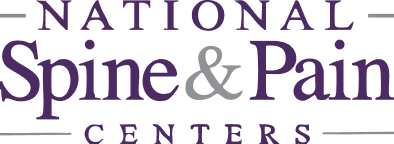Degenerative Disc Disease (DDD)
Common Cause of Lower Back Pain
Degenerative Disc Disease (DDD) is weakening and breakdown of one or more vertebral discs, a structure that sits between the bones in the spine to provide cushioning and allow movement between the spine levels. This condition can develop as a natural part of the aging process, but it may also result from injury. Even though “disease” is in the name, this process is local wear and tear of the spine and is not a part of a systemic illness. DDD most often occurs in the low back, or lumbar spine, but can affect the neck and mid-back as well.
How Degenerative Disc Disease Progresses?
The nucleus pulposus (the inner cushioning)
Degenerative disc disease typically begins with reduction in the inner part of the disc, known as the nucleus pulposus. The nucleus pulposus is a gel-like substance that is flexible and absorbs shock. The disc is often compared to a jelly donut, with the jelly being the nucleus material. Disc degeneration is the process of having less of this nucleus material (less jelly) as well as a change of the material to be more rigid and less flexible (jelly loses water content and becomes more firm). With DDD, the height of the disc is reduced and so are the motion and cushioning between the spinal levels. With less shock absorption between the spine levels, more forces are passed on to the bone, causing swelling and inflammation.
The annulus (disc wall)
The outer part of the disc is called the annulus fibrosis, which is a dense band of fibrous material that contains the inner gel. Small tears, called annular tears, can appear in the disc wall as a result of repetitive stress or a sudden injury. The tears can result in the gel material leaking out of the disc. Because there are nerves in the outer part of disc wall, annular tears can also cause pain. The tears can heal, creating scar tissue that is not as strong as the original disc wall. If the back is repeatedly injured, the process of tearing and scarring may continue, weakening the disc wall.
Spine Level Degeneration – Secondary Effects of Ddd
Unable to act as a cushion, the disc is no longer able to perform its functions of absorbing shock and allowing movement between spine segments. The vertebrae above and below this damaged disc slide closer together. This causes the space for the nerves to exit the spine, known as the foramen, to become narrowed and pinch on the spinal nerves. The facet joints – the areas where the vertebral bones come together, also can become misaligned, resulting in stiffness and pain.
In time, the compressed positioning of the vertebrae can create bone spurs in response to the stresses that occur with having less gel-like cushioning of the disc. The spurs may also reduce segmental motion of the disc and joints at a certain spinal level. The stiff spinal level will pass on more forces to an adjacent level.
Symptoms of DDD
The two main symptoms of DDD are pain and stiffness in spinal levels affected. The stiffness is often worse after prolonged sitting or standing, and pain can range from mild to severe. Bending, twisting and sitting may make the pain worse. Lying down or resting often relieves pressure on the spine.
Diagnosis of DDD
- DDD is found on imaging, either by Xray, CT scan, or MRI.
- In order to specifically diagnose the disc level that is causing the pain, a discography is recommended.
- Rarely and depending on other symptoms, it may be recommended that the patient be evaluated for infection or autoimmune illness that may be contributing to the degeneration of the disc.

-
1Get Started!Find a Doctor or Location that’s best for you! Find a Doctor
-
2Schedule an Appointment
-
3Prepare for AppointmentComplete the pre-appointment paperwork before your visit.
-
4See You at Your Appointment!We appreciate your trust and look forward to building a care plan for you.
-
Pioneering Pain
SolutionsOur doctors don't just use advanced treatments—they pioneer them. -
Quality-Assured
CareComprehensive quality protocols ensure consistent, exceptional care. -
Learning &
LeadingContinuous training and education keep us at the forefront of pain management. -
A Mission
of ReliefYour freedom from pain isn't just our goal—it's our reason for being.

